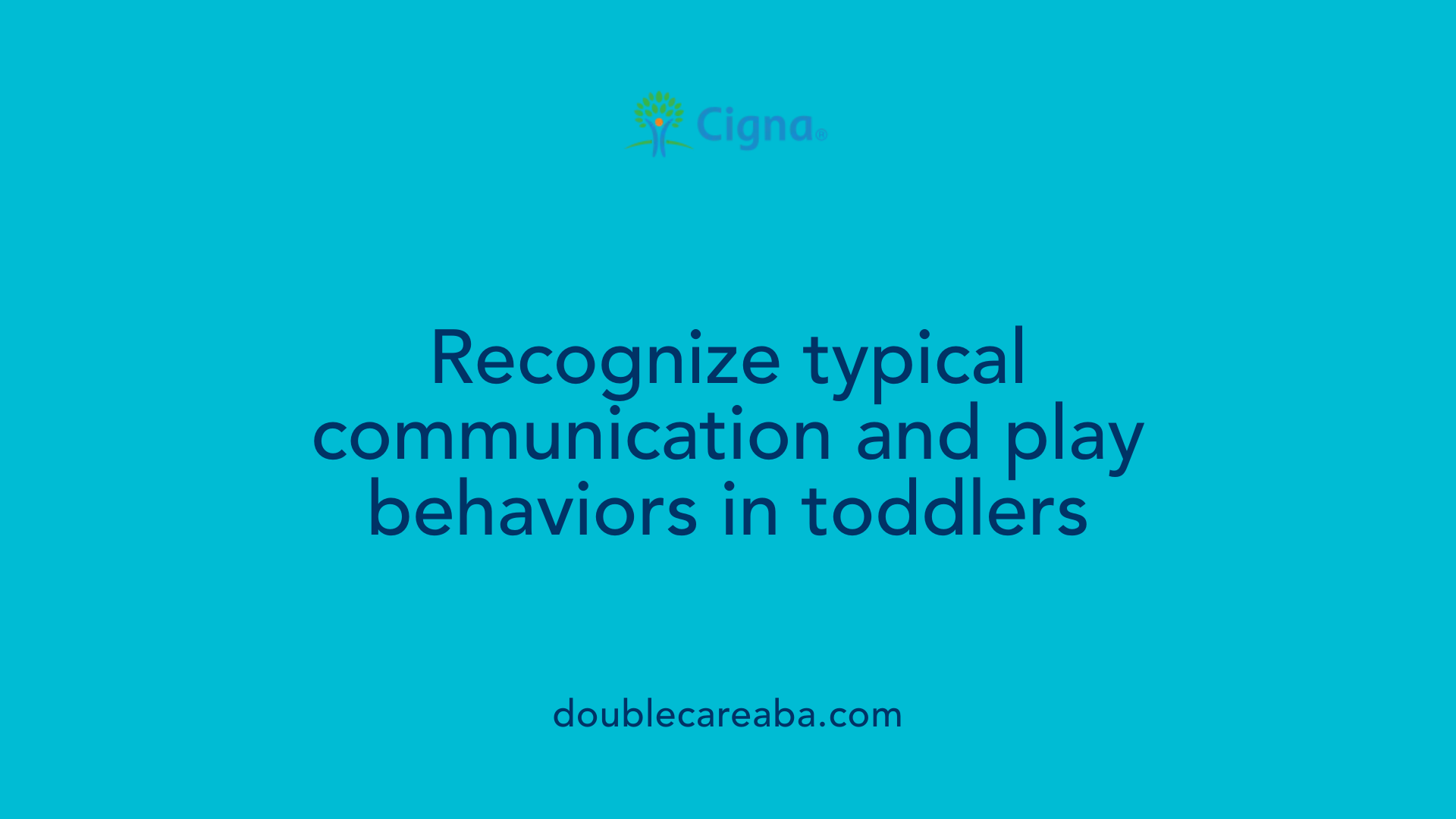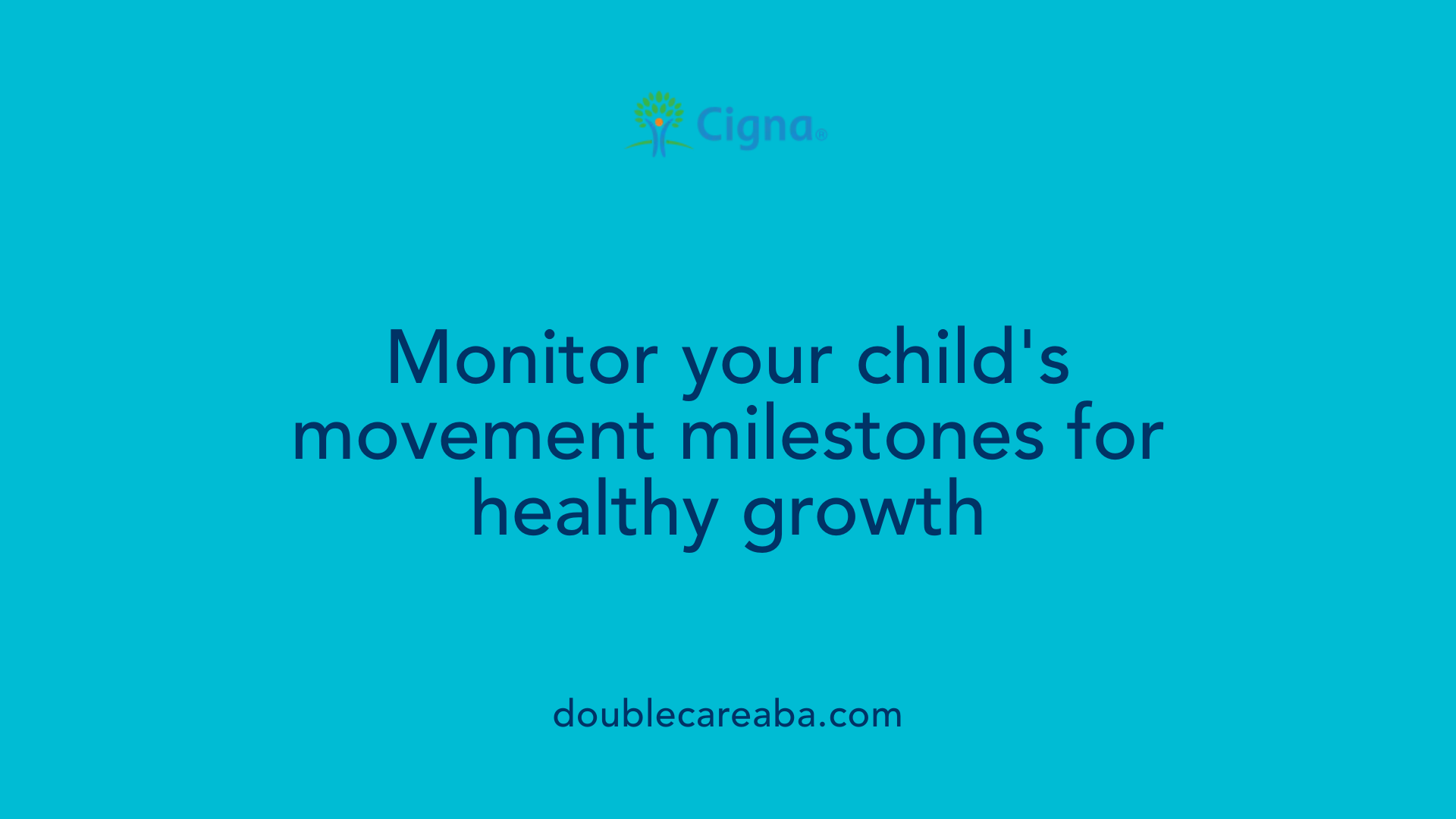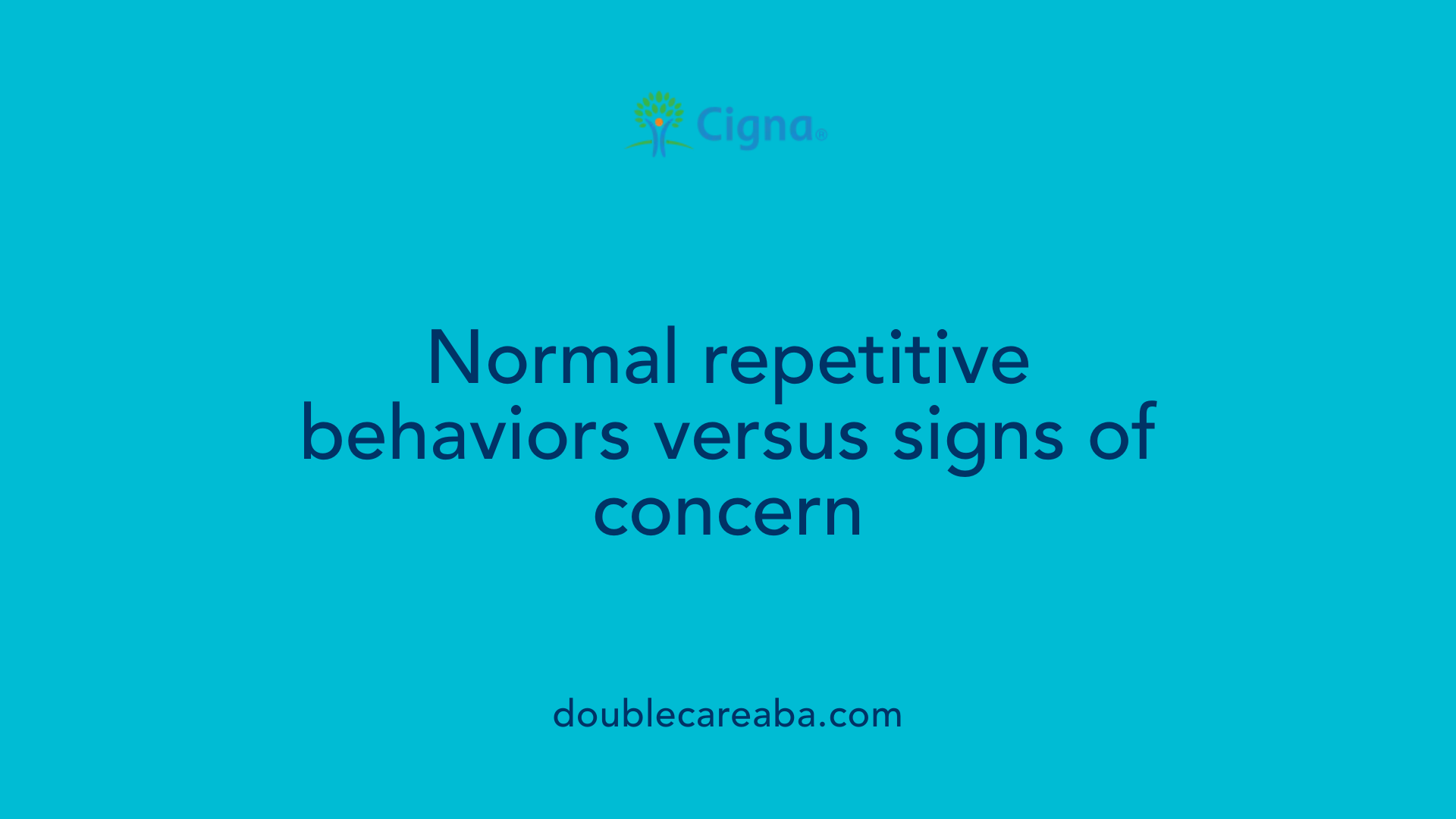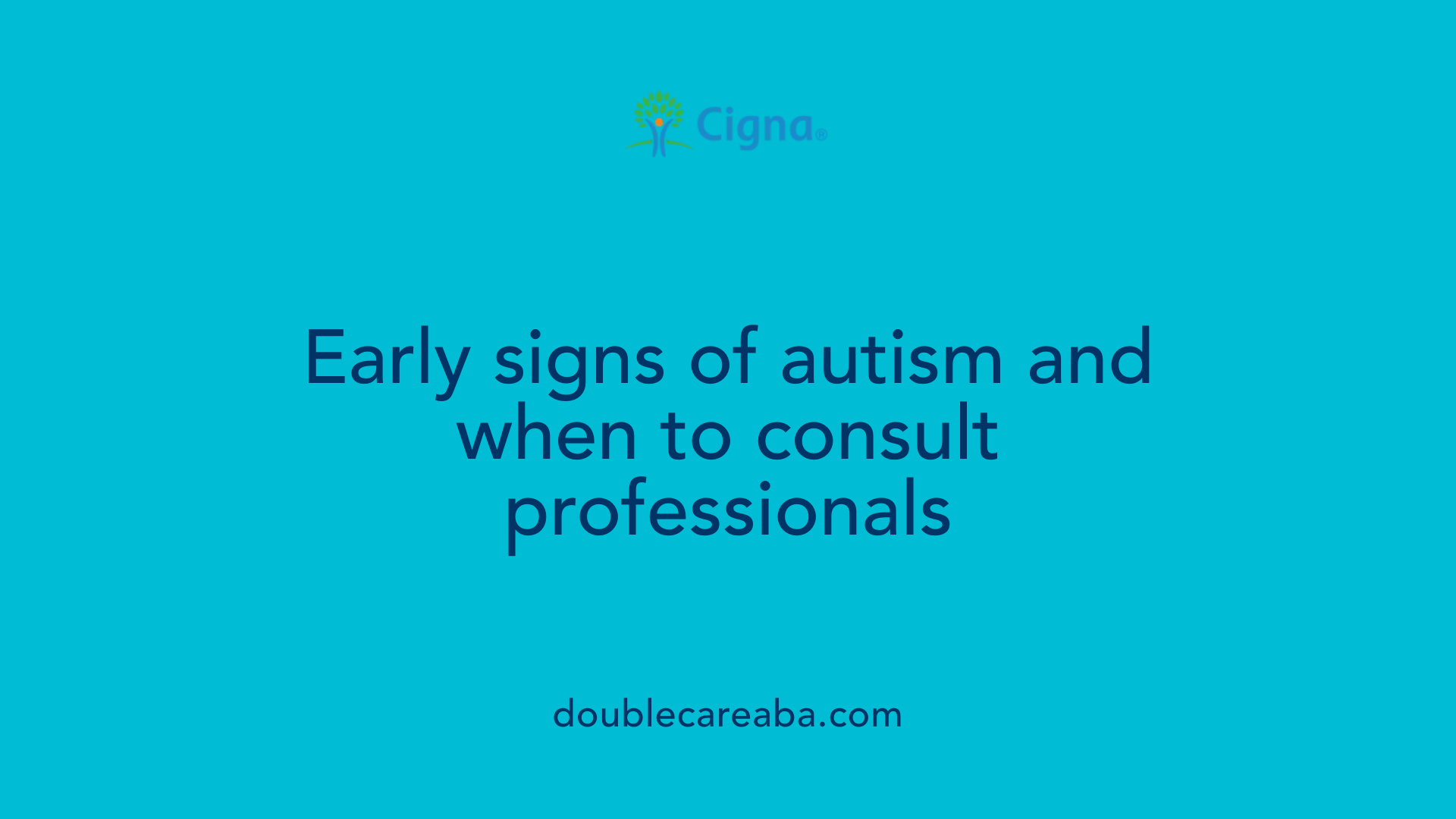Introduction to Typical Toddler Development
Many parents worry about developmental milestones in their young children, especially when they see behaviors that seem unusual. Recognizing what is normal and what might indicate concern, such as autism spectrum disorder (ASD), is crucial. While every child develops at their own pace, understanding key signs of typical development can reassure caregivers and help identify when professional evaluation is necessary. This article details the behaviors and milestones associated with typical social, communication, motor, and emotional development in toddlers, providing clarity on signs your child is not on the spectrum.
Normal Social and Emotional Interaction

Response to social cues
Children developing typically show an interest in social interactions early on. They tend to seek comfort from caregivers when upset and respond to smiles, voices, and other social signals. For example, a toddler might smile back when someone smiles at them or turn toward a caregiver when called. They usually recognize and react to their name around 6-9 months, and by 12 months, they typically turn to look when someone calls them.
Eye contact and shared attention
Making eye contact and sharing attention are strong indicators of healthy social development. Babies who gaze at faces during feeding or diaper changes by 2-3 months are considered normal. Between 9-14 months, children usually begin to follow a pointing gesture or look where someone indicates, showing they engage in joint attention—the foundation for social interactions and communication.
Expressing affection
Expressing affection through hugs, kisses, or cuddles demonstrates emotional bonding and social maturity. Most children enjoy physical closeness and seek comfort from caregivers, which reflects a secure attachment relationship. Furthermore, laughing, smiling at playful interactions, and showing interest in friends or family are positive signs of emotional growth.
When should I not worry about autism in my toddler?
Though every child develops at their own pace, most typically developing toddlers meet certain milestones. If your child responds to their name, engages in shared play, makes eye contact, and communicates verbally or nonverbally, concerns about autism are less likely. Routine check-ups at 18 and 24 months can help track these skills.
It’s normal to see mild delays or variations; these often resolve over time. However, if you notice your child repeatedly withdraws, shows significant communication delays, engages in repetitive behaviors, or regresses in skills, it’s important to consult healthcare professionals. Early evaluation and support can make a meaningful difference.
Understanding typical social and emotional development can reassure parents and help identify early signs that might warrant further assessment, ensuring children receive the support they need to thrive.
Developmental Milestones in Communication and Play

What are the common signs that indicate a toddler is not autistic?
Toddlers who are developing typically show several positive signs in their communication and play behaviors. One of the most noticeable is making consistent eye contact during interactions and responding reliably when their name is called. They often engage in social behaviors like smiling back when someone smiles at them and showing affection through hugs or kisses.
Their play is usually imaginative and varied. Children without autism tend to enjoy pretend play, such as acting out scenarios or using toys as props, which demonstrates cognitive and social development. They explore their environment with curiosity, reaching for objects, stacking toys, or playing peek-a-boo. These behaviors reflect their interest and engagement with the world around them.
Language skills develop appropriately in typical toddlers. They usually begin babbling around 6 months, and by about 12 months, start saying their first words. They also imitate sounds and gestures, such as waving or pointing, and respond to simple directions. Their broad range of facial expressions and emotional responses indicate healthy emotional development.
Other signs include following simple instructions like 'bring me the toy' and participating in joint attention activities, such as pointing at objects of interest. Their interest in other children, ability to form attachments, and typical motor milestones like crawling or walking further affirm typical development.
In summary, behaviors such as reciprocal social engagement, exploratory play, and responsive communication serve as strong indicators that a toddler is not on the autism spectrum, supporting healthy social and emotional growth.
Physical Development and Motor Skills

How can I be sure my toddler is not autistic?
While each child's development varies, there are certain signs that usually indicate typical motor and physical development. A toddler who is not autistic typically demonstrates a range of movement skills, such as crawling, walking, reaching for objects, and engaging in play.
They also explore their environment actively, using their hands and body to investigate new toys or objects. This curiosity often involves manipulating toys in various ways—spinning wheels, stacking blocks, or banging objects.
Physical affection and attachment are also good signs of typical growth. Children who seek comfort through hugs, kisses, or cuddling show healthy social and emotional development.
Coordination and movement skills develop gradually, with toddlers beginning to run, climb, and perform simple motor actions consistently. They respond to simple directions, like 'bring me the toy' or 'clap your hands,' which indicates receptive language and social understanding.
Most importantly, children showing these behaviors tend to respond to social cues like eye contact and respond when their name is called. When a child maintains eye contact, looks when prompted, and shares enjoyment with others, these are signals of typical development.
If your child demonstrates these behaviors, it’s a reassuring sign they are developing normally in terms of movement and motor skills. Watching for milestones such as crawling and walking, as well as engagement in play and exploration, helps confirm healthy development.
For more detailed information, search term: "typical motor development in toddlers." This can provide further guidance on developmental stages and what to look for at different ages.
Understanding Repetitive and Routine Behaviors

What behaviors are common in typically developing toddlers that might be mistaken for autism?
Many behaviors observed in typically developing toddlers can resemble signs of autism but are actually part of normal growth. For instance, toddlers often engage in repetitive activities like flapping hands, rocking, or spinning objects, especially when excited or nervous. These behaviors help them explore their sensations and emotions.
Additionally, a strong preference for routines is typical for children at this stage. They might insist on a specific way of doing things or become upset if routines are suddenly changed. This preference provides a sense of security as they learn to navigate their world.
Sometimes, toddlers might prefer solitary play, briefly shy around unfamiliar people, or show intense focus on particular toys or interests. These traits can be mistaken for autism, but they are common parts of exploring independence.
It's also normal for young children to have brief tantrums or moments of body-stimming. These behaviors are usually temporary and part of emotional regulation development.
Understanding the broader context is vital. While these behaviors are typical, if they are combined with other signs like lack of response to social cues, delayed language development, or limited eye contact, it might warrant further professional evaluation.
In summary, behaviors such as repetitive hand movements, routine dependence, and focused interests are often part of typical toddler behavior. Recognizing them as normal developmental stages helps prevent misinterpretation and supports appropriate developmental tracking.
Early Warning Signs and When to Seek Help

Signs of autism in infants and toddlers
Infants typically show interest in their caregivers and respond to social cues, like smiling back, making eye contact, and cooing when spoken to. During interactions, babies without autism engage in joint attention — looking at a toy then back at a caregiver to share focus. They also display a broad range of facial expressions, responding to emotions through smiles, frowns, or surprise. These babies enjoy physical affection, seek comfort from caregivers, and respond to social and emotional signals positively.
In terms of language, typical development includes babbling, cooing, issuing first words around 12 months, and imitating sounds or speech. Play behavior involves exploring toys, engaging with new objects, and playing simple games like peek-a-boo. Interest in other children, making eye contact, and sharing enjoyment are signs of developing social skills.
On the physical front, reaching for objects, crawling, and walking are milestones indicating good development. Regular sleep patterns and positive responses to music and rhythm, such as moving or clapping, reflect typical sensory processing. Overall, these behaviors suggest healthy social, emotional, and cognitive growth.
Developmental red flags
However, some children exhibit signs that might warrant further observation. For example, a lack of response to their name after several calls, minimal eye contact, and limited joint attention could be early warning signs. Repetitive movements like hand-flapping or unusual body movements, delays in reaching developmental milestones like rolling over or crawling, and limited use of gestures such as pointing or waving are also concerning.
Children at risk for autism might show unusual sensory responses — being overly sensitive to sounds, sights, or textures. They may carry objects for long periods or manipulate toys in atypical ways, like spinning wheels without typical play. Difficulties in soothing, low enthusiasm for exploring or limited interest in social interactions are common red flags.
Behaviorally, at-risk children might not follow simple directions, fail to respond to their name, or avoid close contact and social engagement. They often do not share interests through smiling or pointing, and might not use facial expressions or gestures to communicate.
Importance of screening
Early detection is crucial for accessing timely support and interventions. Routine developmental screenings during well-child visits, especially around 18 and 24 months, help identify any delays or irregularities early on. Recognizing signs — even subtle ones — can prompt parents to seek professional assessments. Accurate diagnoses, usually confirmed by specialists through detailed evaluations, enable planning tailored support that can significantly improve long-term outcomes.
In summary, while many behaviors are part of typical development, persistent concerns such as limited eye contact, delayed speech, lack of social interest, and repetitive behaviors should prompt consultation with healthcare providers. Early intervention can make a meaningful difference in a child's developmental trajectory.
| Milestone | Typical Age Range | Indicators of Development | Signs to Watch For | Possible Concerns |
|---|---|---|---|---|
| Responds to name | 6-12 months | Looks when called | Doesn’t respond to name | Early sign of autism risk |
| Imitates sounds | 9-12 months | Babbling, copying sounds | Rare or no imitation | Language delay or autistic traits |
| Uses gestures (e.g., pointing) | 9-12 months | Waving, pointing at objects | Doesn’t use gestures | Social communication delay |
| Combines words | 18-24 months | Uses two-word phrases | No word combinations | Speech or language delays |
| Plays interactively | 12-36 months | Engages in pretend play | Lack of pretend play | Imaginative deficits |
| Pursues social interests | 12+ months | Shares interests with others | Avoids social interactions | Social withdrawal or autism signs |
When should I not worry about autism in my toddler?
You generally do not need to worry about autism if your toddler is meeting key developmental milestones, such as responding to their name, engaging in joint play, making eye contact, and communicating verbally or nonverbally. Most children on the autism spectrum start showing signs by around 12 to 24 months; if your child is developing social and language skills within typical age ranges, concerns are less likely.
Routine well-child visits include screenings that help ensure your child's development is on track. It's normal for mild delays or variations to occur and often resolve without intervention. However, watch for consistent progress — if your child shows significant social withdrawal, communication delays, or repetitive behaviors, consult a healthcare professional.
What are the common misconceptions about signs of autism in toddlers?
A common misunderstanding is that behaviors like lack of eye contact or delayed speech are solely signs of autism when they can be part of normal variation. Some believe autism results from parenting issues, which is false; genetics and neurodevelopmental factors are primary causes. Stereotypes also abound, such as thinking all autistic individuals have special talents or are aggressive, which is not true.
Another widespread misconception is that vaccines cause autism, but scientific studies have shown no causal link. Recognizing that autism manifests differently in each individual and that early support can improve outcomes is vital.
Understanding these nuances helps in making informed decisions and seeking appropriate guidance when needed.
Common Misinterpretations and Normal Variations
What behaviors are common in typically developing toddlers that might be mistaken for autism?
Many behaviors observed in young children can sometimes be misunderstood as signs of autism, especially when taken out of context. For instance, toddlers often enjoy exploring their environment independently, which might look like a preference for solitary play. This is a normal part of childhood development as they learn to control their actions and test boundaries.
Occasional shyness or becoming focused on a particular toy or activity can also be mistaken for autistic behaviors. Children naturally go through phases of intense interest in certain objects, such as spinning wheels or flashing lights. These repetitive interests are typical at specific developmental stages.
Routine dependence, like insisting on the same bedtime or meal, is common in young children who find comfort in predictability. Similarly, repetitive movements like hand-flapping, body rocking, or flicking fingers can happen in typically developing children when they are excited or nervous, not necessarily signaling a problem.
Tantrums or moments of withdrawal during emotional upset are also part of normal development. It is important to look at the overall picture—how a child communicates, interacts socially, and meets developmental milestones. Temporary or isolated behaviors are usually not a cause for concern.
Consulting with healthcare providers can help differentiate normal developmental behaviors from signs requiring further assessment. Overall, understanding the context and observing a child's progress over time is crucial in avoiding misinterpretations.
Final Thoughts: Confidence in Your Child’s Development
In understanding what signs indicate your toddler is not autistic, it’s important to recognize the broad spectrum of typical developmental milestones. Making eye contact, responding to their name, engaging in play, exploring their environment, expressing affection, and developing language skills at an appropriate age are reassuring signs of typical development. While close attention to behavior is key, remember that children progress in their own unique ways, and mild deviations often resolve naturally over time. If you have concerns, routine pediatric screenings are a helpful safeguard. Ultimately, awareness and understanding can help you feel confident in your child's growth and development, and professional guidance is invaluable if doubts arise.
References
- Signs of autism in children - NHS
- Signs Your Baby Is Not Autistic: Understanding Early Development
- Early Signs of Autism - UCSD Neurosciences
- Signs that a child or adult may be autistic
- Putting Parental Worries to Rest: Signs Your Toddler is Not Autistic
- Autism Signs in Infants
- [PDF] Early Warning Signs of Autism Spectrum Disorder - CDC
- 10 Signs Your Baby Is Not Autistic: Indicators to Consider - Affinity ABC














